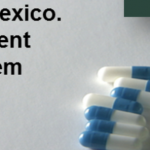Myths of Spanish Patents
- 16 June 2015
- Articles
The technological lag in Spain has often been attributed to cultural reasons, something that is far from the objective of this blog, but which does bring to light that we may still have a long learning process as regards Intellectual Property and Copyright in front of us.
There are certainly some figures of Intellectual Property and Copyright, such as plant varieties, of which the general public is unaware. But, even if we concentrate on “traditional” figures like patents, the panorama is not much better and we can even affirm, in honour of the title of the blog, that we are still living wrapped in a mantle of myths and confusion when patents come up as a subject of everyday conversation in Spain, something which doesn’t often happen. Just a few “anecdotes” to illustrate this.
We don’t know whether the most quoted “Spanish patent” was in fact one, and is probably the invention which has had most political influence in the country. The patent on the straperlo roulette, baptized in honour of its inventor Daniel Strauss and his partner Jules Perel, was applied for on the 12 September 1934 and granted on the 16 January 1936. Its introduction into Spain caused the fall of Lerroux’s Government and, in fact, some historians cite this episode as the beginning of the end of the second Republic.
The “patents” that we all know never existed as such… or weren’t such a novelty
We have always heard references to patents for Chupa-Chups and the mop, but as the SPTO itself indicates :
CHUPA-CHUPS: “Apart from the mop, the other half of the myth about Spanish ingenuity is the Chupa-Chups, which is really not an invention and was never patented as such. Chupa-Chups is, of course, a very successful company and brand. In March 1963 Enric Bernat, the founder of the company, made the first attempt to register a “procedure for the uniform wrapping of candy on a stick” (patent no. 292,094), which was denied because of the lack of novelty. From then on he applied for different utility models related to display packaging, improved handles or the chewing gum filling, almost always with the opposition of other manufacturers, like the American company Tootsit Roll Industries Inc., which had been producing similar products since 1934.
In fact, patents for candy on a stick, such as that registered by the Madrid candy manufacturer José Segura, exist on SPTO files since at least 1919.
MOP: “If there is one ingenious solution for an everyday problem that has constantly been claimed as an example of Spanish “inventiveness”, that is the mop. And it is true that the model patented between 1957 and 1964 by the engineer from La Rioja Manuel Jalón Corominas (1925-) acquired well-deserved fame and extensive use. However, there are dozens of prior patents which describe the idea of mopping using fibre attached to the end of a handle which is wrung out in a bucket, like, for example, patent no.27,948, obtained in Spain in 1901 by the New Yorkers Henry Arthur Hayden and Hugo Friedrichs for “a perfected device for cleaning floors, walls or other objects”. The SPTO files include many similar examples between 1900 and 1950 with different shapes, wringing systems and handles.”
But, the commercial genius of its developers should never be denied.
This profound lack of knowledge can be sensed in everyday language itself, especially in the media: patent the trademark, apply for worldwide patent, patent the idea,… are expressions we often come across and which are technically incorrect.
Perhaps we lack perseverance, given that we have had time. Funnily enough Spain stands out regarding the early adoption of the main legal milestones in this area. It probably has the fifth oldest patent legislation in the world, in 1811 to be precise (this is generally unknown, given that the majority of non Spanish studies only refer that of 1820 as being the first) only preceded by England 1623, France 1791, the United States 1793 and Austria 1810, and the great revolution caused by the 1980 Bayh-Dole Act in the U.S. clearly inspired by the first Spanish Science Law in 1986,… far ahead of other developed countries which followed the tendency marked by the American law at a much later date.
The saying is that any country that only yearns for its past has not future but, given the data to hand there is good news regarding the sector of patents and technological contributions and we must recognize the spectacular improvement of Spain in quantity and quality over a very short time. For example, and in order not only to talk about patents, a small example which affects the country’s economic course itself, in December 2012 we celebrated the highest coverage rate in Spanish history of the balance of payments for “Royalties and Income from Intangible Assets”, although the Bank of Spain has recently warned us that this has deteriorated by up to 46%.
What we are sure of is that the best is yet to come and that we cannot miss this historic opportunity.








